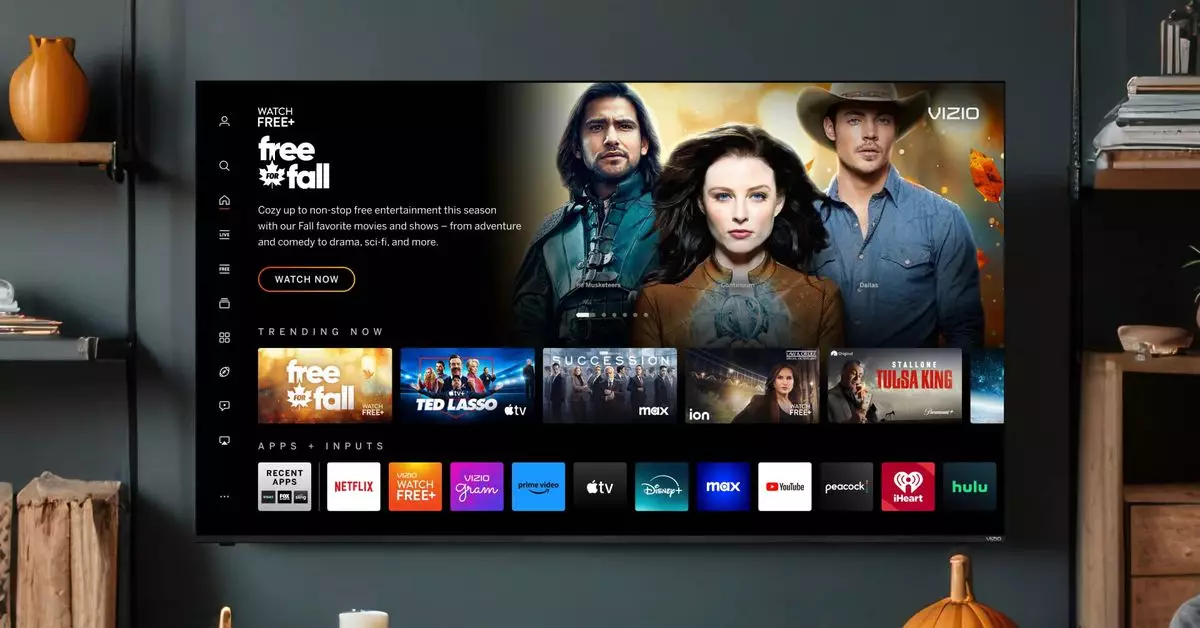Walmart’s recent acquisition of Vizio for $2.3 billion marks a transformative step in the competitive landscape of advertising-based streaming services and consumer electronics. This transaction not only signifies Walmart’s ambition to enhance its advertising division but also sheds light on the evolving relationship between retail giants and tech companies in a highly digital world.
Walmart has long been known primarily as a retail powerhouse; however, this acquisition underscores a significant pivot toward digital advertising and data utilization. Vizio’s advertising and data division, Platform Plus, is reportedly crucial to the company, as it generates all of Vizio’s gross profit. This information is strategic gold for Walmart, enabling them to refine their advertising efforts on platforms such as Disney Plus and Hulu, utilizing consumer data for targeted advertising. This not only broadens Walmart’s revenue streams but also positions it as a major player in the rapidly expanding advertising sector witnessed in the streaming market today.
With the acquisition, Walmart is poised to capitalize on existing and new advertising opportunities linked to Vizio’s smart TVs. The retail giant has expressed plans to enhance its ad services further and, potentially, place advertisements directly on Vizio TVs, whether in-store or in customer homes. This distinctive approach could foster a new revenue stream while simultaneously elevating brand visibility in an increasingly crowded market.
However, this acquisition isn’t without its controversies. Privacy advocates have raised significant alarms regarding data tracking and advertising practices that Vizio has been implicated in before. Walmart’s purchase follows a history where Vizio was penalized $2.2 million in 2017 for unauthorized tracking of users, which adds a layer of complexity to consumer trust moving forward. As Walmart nudges Vizio towards more aggressive advertising strategies, the potential for privacy violations could incite scrutiny from both regulators and consumers alike.
The acquisition also serves as a tactical response to rivals like Roku, which has made notable strides in the market by selling its smart TVs and generating substantial advertising revenue. For example, Roku reported $908.2 million in advertising and subscription revenue in the third quarter of 2024. In comparison, Vizio’s earnings report indicated an average revenue of $37.17 per user. By integrating Vizio into its operations, Walmart aims to enhance Vizio’s competitive position against such giants and reclaim market share in the budget-friendly TV segment.
Despite this acquisition, both Walmart and Vizio plan to maintain a degree of operational independence for the time being. Vizio’s CEO, William Wang, will continue to lead the company, perhaps indicating that Walmart’s intervention will focus more on leveraging data rather than restructuring Vizio’s core operations immediately. Seth Dallaire, Walmart’s executive vice president, commended Vizio’s ability to adapt and scale its advertising business, suggesting a strategy of synergy rather than overt control.
Walmart’s acquisition of Vizio is a pivotal moment not just for the companies involved but for the broader intersection of retail and technology. With the increasing convergence of various sectors, this deal underscores the potential for innovative advertising approaches, while simultaneously highlighting crucial concerns surrounding consumer privacy. As they navigate this new terrain, both companies will need to tread carefully, balancing growth with ethical practices, to establish a sustainable footprint in an evolving market landscape.

